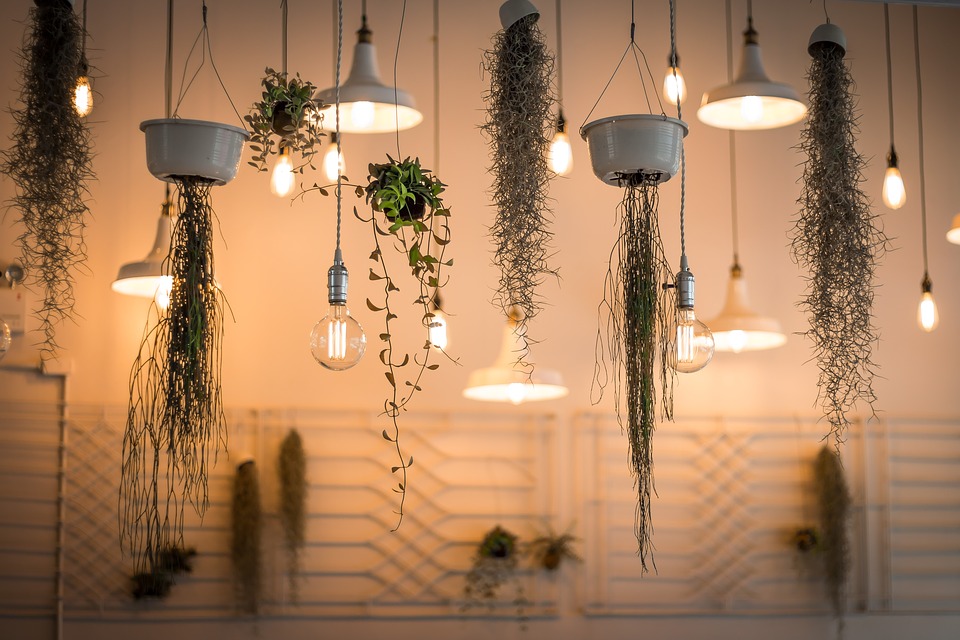
How To Grow Hanging Plants At Home
You live in an urban landscape. Your workday is long and stressful. You’re trying to come home, throw your keys on the counter, and relax amongst beautiful, luscious hanging plants that make your space beautiful and comfortable to be in. We get it.
You might have heard that keeping green houseplants around your abode can produce oxygen, help with air purification and even have positive effects on your mental health. And growing hanging plants is a great way to be space-efficient. The only question is how in the world to start growing these hanging plants at home?

The Basics
There’s really no need to be intimidated. Your approach to hanging plants, whether indoor or outdoor, should be pretty similar to how you treat your other potted plant friends. Pay attention to what the plant wants and needs, and provide water, light, and occasional fertilizer as needed. If you aren’t sure what species of plant is hanging from your basket you can ask a professional at your local garden store.
Popular hanging plant species include:
- Indoor ivy
- Pothos
- Jade
- Spider plants
- Heart leaf rhododendron
- Peperomia
- Shamrock plant
Even if you don’t have a magical green thumb, a little care and attention can go a long way. Once you get to know how to care for your specific plants, you can help them thrive!
Location
Part of getting to know a plant is understanding what sort of conditions the hanging plants are most likely to succeed in. For example, your windowless basement won’t work well unless you’ve got the proper artificial lights installed. Some plants thrive in the sunshine, others prefer indirect, bright light. Others do well in the shade. Knowing these differences can save you time, money and heartbreak.
Another thing to keep in mind is that heat rises. Often, your hanging plants will be hotter, drier and thirstier than other potted plants and need to be watered more frequently.
Weight
The larger your hanging plant, the more plant matter and soil the pot contains. This might seem obvious, but can be easy to underestimate. You’ll notice these baskets can be really heavy – especially right after you give them a thorough watering. Before you go wild placing hooks into plaster, drywall, or rotting wood – stop. Double check that your placement is into wall studs or ceiling joists. Make sure that the structure is sound and will be able to hold the weight. Otherwise, you’re setting yourself up for disaster.
If you just moved into a new apartment with hooks already installed, test them first.
One thing you can do to reduce the overall weight of your hanging plant is to incorporate perlite into the hanging pot’s soil. Perlite is a form of volcanic glass, mined all over the world, that is commonly used in soils. Be aware that incorporating more perlite into the soil will increase the drainage. This means you make need to water more often and be on the lookout for increased drippage.

Protect the Surrounding Space
Speaking of drippage, with hanging plants a little foresight can spare you from a lot of clean-up effort. If you haven’t already figured this out the hard way, water drainage is a big factor when it comes to plants. So hanging or not, so you’ll want to plan ahead. Failure to do so will result in large puddles and annoying messes. Tactics to avoid these scenarios include a pot within a pot. Plant your green starter in a pot with drainage holes and then place that pot inside a larger pot that does not have drainage holes. It’s that easy. Often hanging plants are now sold from the store in pots with attached trays to catch the water. These are great, but can overflow if you’re not paying attention.
Needless to say, if you have white carpet or valuable textiles in a particular room, you might want to go ahead and place your hanging pots elsewhere.
Watering
While hanging a flowing pot of indoor ivy from the middle of a lofted ceiling might be an epic addition to a room’s decor, you’re going to want to think through how you plan to water hanging plants on a daily or weekly basis. If it is impossible for you to reach the pot from where it hangs you can either devise an intricate pulley system (hats off to you, intrepid inventor!) or else come up with an alternative place where you can water your hanging plant safely. Consider investing in a step stool and a long-necked watering can.
Experiment
Once you start experimenting with hanging plants, it can be a fun and creative process to explore. There are so many different ways to display plants in a given space. You can build your own trellis to suspend from the ceiling. Try gluing a (strong) magnet to a pot and sticking it to the fridge. There are vertical planters that can be attached to a wall. Suction cups can be used to secure plants to window panels. People have figured out how to grow plants upside down, inside aquariums and have even painted moss onto walls. Living in a green, creative space is absolutely possible.
How have you incorporated plants into your living space? Let us know in the comments below!












